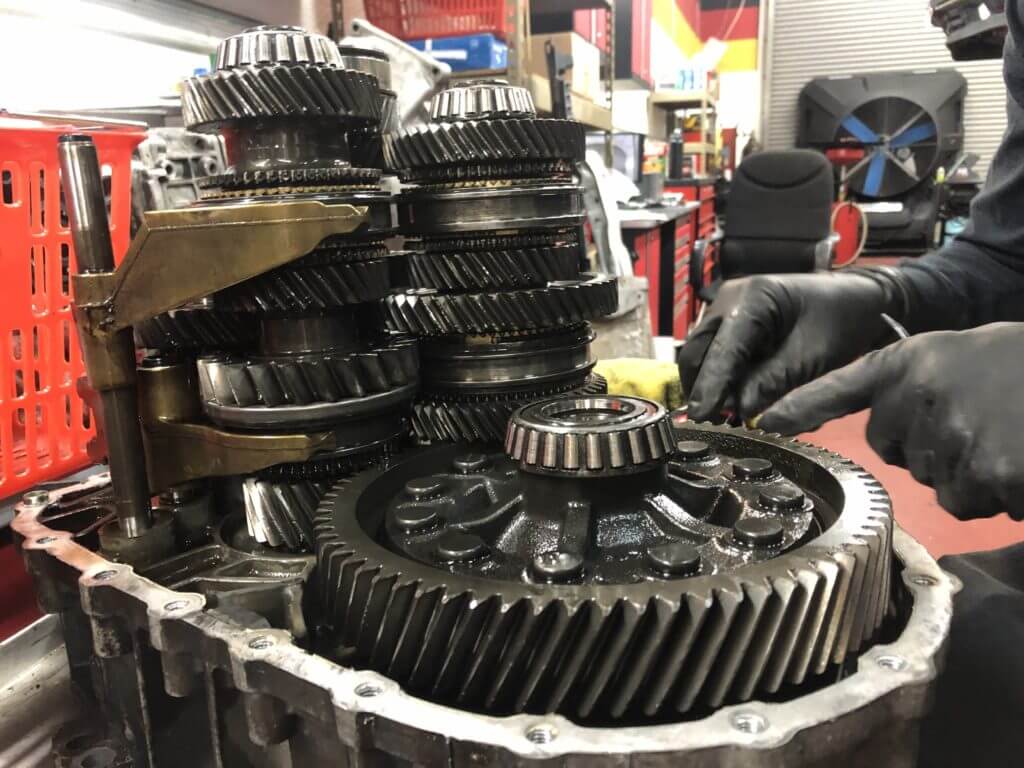The temperature of transmission fluid should not exceed 220°F (104°C). If the temperature is higher than this, it can cause breakdown of the fluid, leading to a decrease in performance and lubrication. This can also lead to excessive wear on metal components which will eventually result in total failure of the transmission system.
Furthermore, high temperature can cause oil oxidation and reduce its lifespan significantly. Therefore it is important to keep an eye on transmission fluid temperatures as they are usually higher than engine coolant temperatures due to their location deep within the engine compartment.
When it comes to transmission fluid, you want to make sure that it is not too hot. If the temperature of the transmission fluid gets above 220 degrees Fahrenheit (104 degrees Celsius) then it is definitely too hot and needs to be addressed right away. This heat can cause permanent damage to your vehicle’s transmission system and will eventually lead to a breakdown in performance or even complete failure.
To prevent this from happening, always monitor your transmission fluid temperatures closely and contact a mechanic if they get too high.
What temperature is too hot for transmission fluid?
Is 225 Too Hot for Transmission?
The transmission of an automobile is designed to operate safely within a temperature range of 175-225 degrees Fahrenheit. While 225 degrees may be too hot for optimal operation, it can still function without causing any damage if the engine and other components are running properly. However, prolonged exposure to temperatures above this range could result in significant wear and tear on the transmission over time.
It’s best to keep the temperature below 200F as much as possible for maximum reliability and longevity.
How Do I Lower My Transmission Temperature?
Lowering your transmission temperature is important for keeping your vehicle in peak operating condition. One of the most effective ways to do this is by using a transmission cooler. A transmission cooler works by transferring heat from the hot fluid inside the transmission to an external air source, essentially cooling down the entire system.
If you have an older car without a built-in cooling system, you can install an aftermarket transmission cooler with relative ease. Additionally, if you are frequently driving in stop-and-go traffic or on mountainous roads where shifting and braking often occur, it’s helpful to use synthetic oil as it has better heat transfer capabilities than regular motor oil. Finally, make sure that all of your belts and hoses are properly adjusted and functioning correctly so there won’t be any leaks that could cause overheating issues.
Is 250 Degrees Hot for a Transmission?
Yes, 250 degrees is too hot for a transmission. The normal operating temperature of a transmission should be between 175 and 225 degrees Fahrenheit. If the temperature goes above this range, it can cause serious damage to the internal components of the transmission such as seals, bearings, and clutches.
This excessive heat can also lead to slipping gears and other operational issues that will reduce the lifespan of your vehicle’s powertrain system. To prevent overheating you should check your fluid levels regularly and have your car serviced if necessary to ensure proper function.

Credit: pickuptrucktalk.com
Transmission Too Hot Warning
The “transmission too hot” warning is an important indicator that the transmission fluid in your vehicle has exceeded a safe operating temperature. If this warning light appears on your dashboard, it means that the transmission should be shut off immediately to prevent damage to the system and ensure a longer service life for your car. To avoid further complications, it’s important to have any issues with overheating checked out by a qualified technician as soon as possible.
How to Cool down Transmission Fast
One of the quickest and most effective ways to cool down a transmission is to use an external oil cooler. An external oil cooler uses a fan or radiator system to draw in air, which then cools the heated transmission fluid. This method is especially useful for vehicles that are frequently used for hauling heavy loads or driving in hot climates.
Additionally, it increases the life span of your transmission by reducing wear on its internal components due to excessive heat buildup.
Transmission Overheating Symptoms
Transmission overheating can be a serious issue for any vehicle, and it’s important to be aware of the signs that your transmission may be at risk. Common symptoms include slipping gears, burning smells, grinding noises when shifting, a delay in shifting after acceleration, leaking fluid from the transmission pan or dipstick tube due to heat expansion of seals and gaskets, an illuminated warning light on the dashboard indicating ‘transmission overheat’ or ‘check engine’, and increased temperatures around the exterior of the transmission itself. If you experience any of these symptoms while driving your vehicle, have it inspected by an experienced mechanic as soon as possible.
Conclusion
Given the temperature range that is recommended for transmission fluid, it is clear that temperatures above 212°F can cause serious damage to the vehicle’s transmission. If drivers find themselves driving in extremely hot climates or if they feel their car is running too hot, they should take steps to ensure the safety of their transmission and have it checked by a professional mechanic as soon as possible. By taking these precautions, drivers can help maintain their vehicles’ transmissions and increase its longevity.



